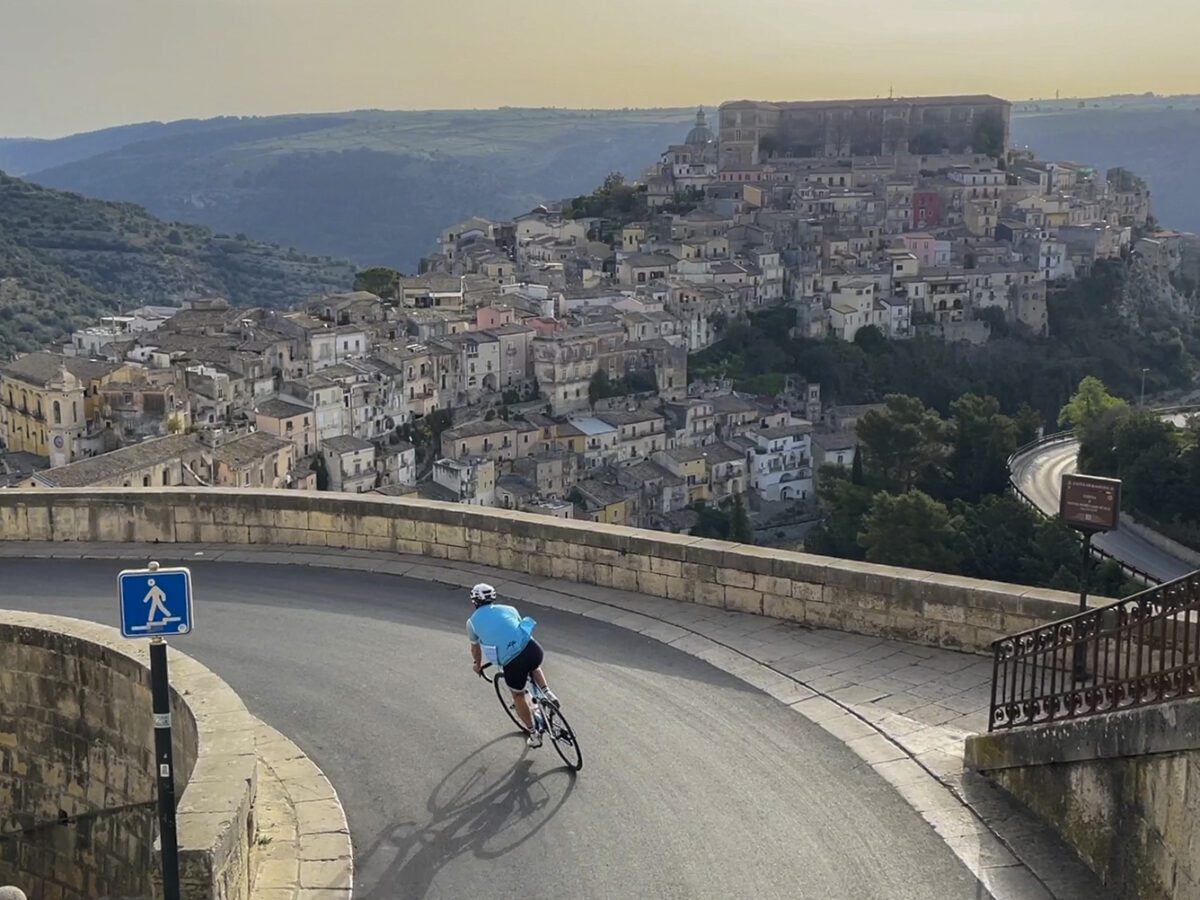Booking a cycling tour through Italy, France, or beyond sounds like the ultimate holiday: stunning scenery, immersive culture, and the thrill of covering new roads and landscapes under your own power. But often one of the first questions riders ask is a practical one: “How fit do I need to be?”
According to Damian Hancock, co-founder of A’QTO Cycling, which has been running boutique cycling tours in Italy for over a decade, the answer is less about pure fitness and more about specific preparation. “People often underestimate the impact of riding consecutive days in Italy’s challenging terrain,” he explains. “It’s not about being the fastest in the group, it’s about arriving ready for the specific challenge of the tour you’ve chosen.”
Here’s what Hancock says riders should consider before signing up for a cycling tour vacation.
1. Your Starting Point Matters
If you’re a regular cyclist with years of riding under your belt, your legs will have some “muscle memory.” That base fitness gives you a good head start. But even if you’re relatively new to cycling and are fit from other activities, Hancock says 10 weeks of focused training can be enough to prepare for a moderate-level tour, with 16 weeks being ideal.
He points to past guests who started almost from scratch: “One guest had only been on a road bike for four months before joining our Puglia tour. With smart training, they completed all of the riding and had a fantastic experience.”
The key, Hancock says, whether you’re an experienced cyclist or new to cycling, is the right preparation and committing to the training window you have.
2. Know How You Feel About Climbing
Cycling in Italy often means hills, and lots of them. Some riders relish the challenge while others dread it. “Italy’s landscape is mountainous in many regions. If you don’t enjoy climbing, you won’t want to book a Stelvio & Dolomites or Giro d’Italia-style itinerary with 13,000 meters of elevation, or even Tuscany at 10,000 meters,” Hancock says.
Instead, he recommends tours with less elevation, such as Puglia at 5,000 metres, where the riding is still scenic but perhaps less intense. Always look at daily elevation as well as distance, as shorter days with steeper climbs are harder than longer days with lower gradients.
3. Train Specifically for the Tour
The best preparation mirrors the reality of the route. If your tour includes big climbs, train in the hills or on an indoor trainer. If it’s long mileage, work on steady tempo rides. And most importantly? Learn to ride on tired legs.
“On tour, fatigue will set in, but if you’ve prepared well, you’ll be accustomed to that feeling and go on to be even stronger towards days 6 and 7,” Hancock says. “A minimum of three back-to-back rides up to 80km in training per week will help your body adjust for more challenging tours.”
4. Don’t Stress About Speed
Many riders worry they’ll “hold up the group.” But Hancock insists that speed averages on tour are misleading. “You can’t compare your 30kph average on a flat local ride with Tuscany, where you’re continuously climbing and descending on new roads,” he says.
A good operator will split groups, have a high guide-to-rider ratio, and provide GPS routes and a support vehicle so everyone can ride at their own tempo. The only thing that matters is riding at a pace you can sustain over multiple days, allowing you to have the energy to enjoy where you are.
5. Prepare Mentally as Well as Physically
Hancock stresses the importance of mindset.“The attitude you bring is key,” he says.
Mentally preparing for multiple days of riding and ensuring you can ride the tour’s hardest days before you depart will give you comfort that everything is possible. You may encounter changeable weather or a flat tyre or two, but these surprises won’t affect you when you know what you’re capable of.
And if you haven’t been able to prepare as well as you’d hope, be open to using the expertise of your tour guides to tailor the ride program and use of the support vehicle, to deliver the best experience for you. After all, it’s about enjoying the ride and the immersive cultural experience the tour offers with amazing food, scenery, and connection.
Bottom Line
So, how fit do you need to be for a cycling tour? Fit enough to ride back-to-back days, prepared for the terrain you’ve chosen, and mentally ready for the challenge. It’s less about being the fastest cyclist and more about riding to your own tempo and being adaptable.
“Cycling tours are about more than kilometres,” Hancock says. “They’re about culture, camaraderie, and discovering a country at the perfect pace: slow enough to see it, fast enough to enjoy it. If you do the work beforehand, the ride itself becomes one of the most rewarding experiences you’ll ever have.”

